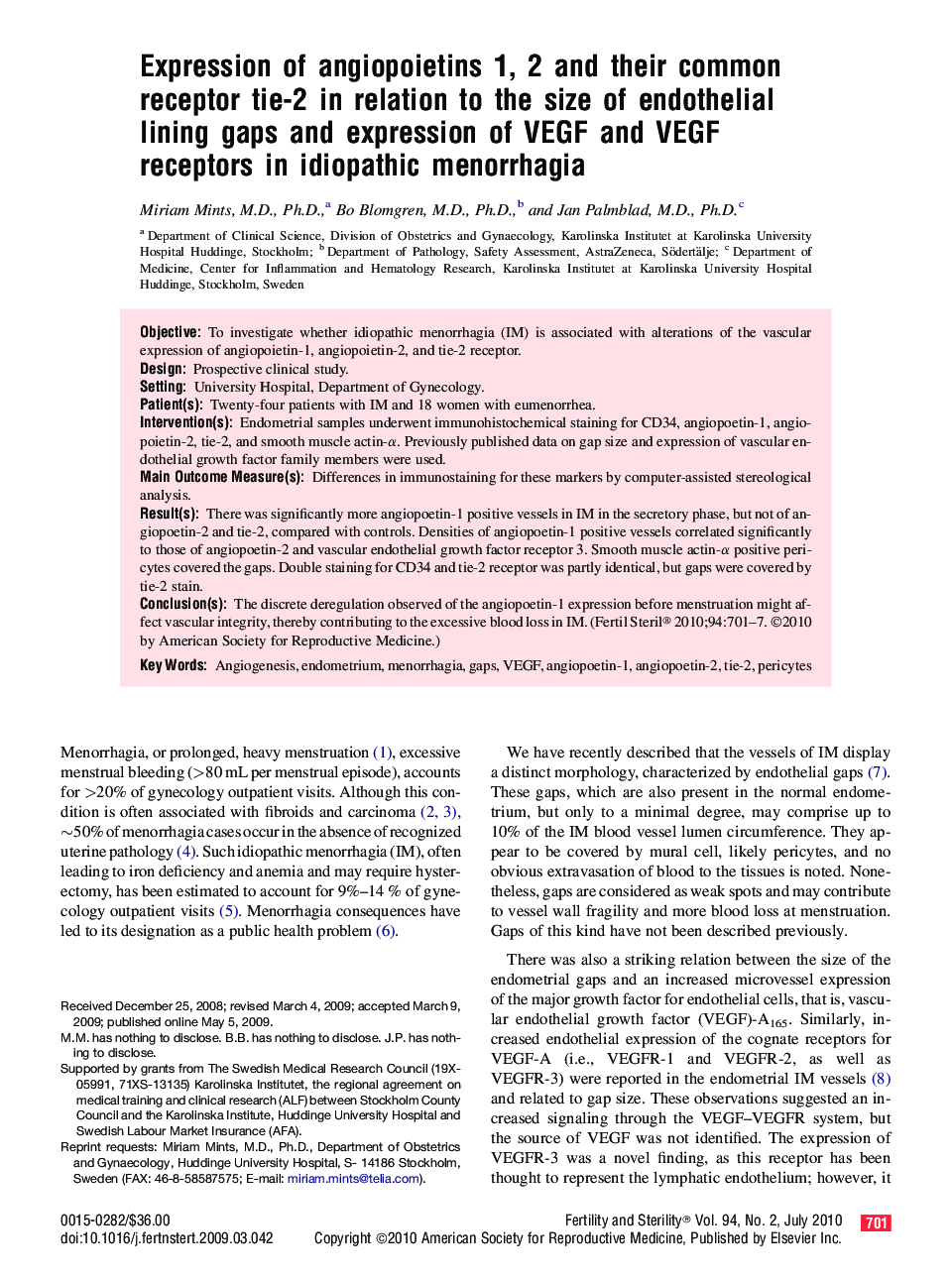| کد مقاله | کد نشریه | سال انتشار | مقاله انگلیسی | نسخه تمام متن |
|---|---|---|---|---|
| 3933454 | 1253347 | 2010 | 7 صفحه PDF | دانلود رایگان |

ObjectiveTo investigate whether idiopathic menorrhagia (IM) is associated with alterations of the vascular expression of angiopoietin-1, angiopoietin-2, and tie-2 receptor.DesignProspective clinical study.SettingUniversity Hospital, Department of Gynecology.Patient(s)Twenty-four patients with IM and 18 women with eumenorrhea.Intervention(s)Endometrial samples underwent immunohistochemical staining for CD34, angiopoetin-1, angiopoietin-2, tie-2, and smooth muscle actin-α. Previously published data on gap size and expression of vascular endothelial growth factor family members were used.Main Outcome Measure(s)Differences in immunostaining for these markers by computer-assisted stereological analysis.Result(s)There was significantly more angiopoetin-1 positive vessels in IM in the secretory phase, but not of angiopoetin-2 and tie-2, compared with controls. Densities of angiopoetin-1 positive vessels correlated significantly to those of angiopoetin-2 and vascular endothelial growth factor receptor 3. Smooth muscle actin-α positive pericytes covered the gaps. Double staining for CD34 and tie-2 receptor was partly identical, but gaps were covered by tie-2 stain.Conclusion(s)The discrete deregulation observed of the angiopoetin-1 expression before menstruation might affect vascular integrity, thereby contributing to the excessive blood loss in IM.
Journal: Fertility and Sterility - Volume 94, Issue 2, July 2010, Pages 701–707